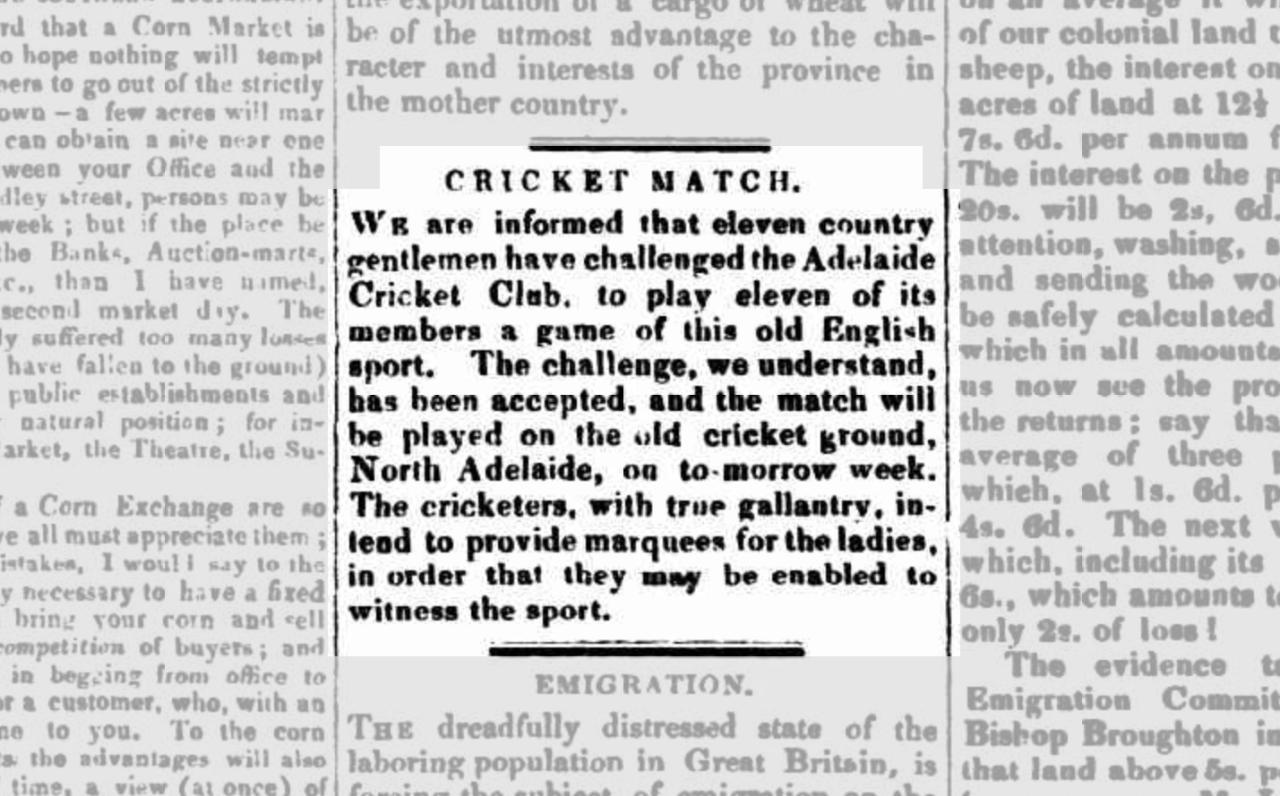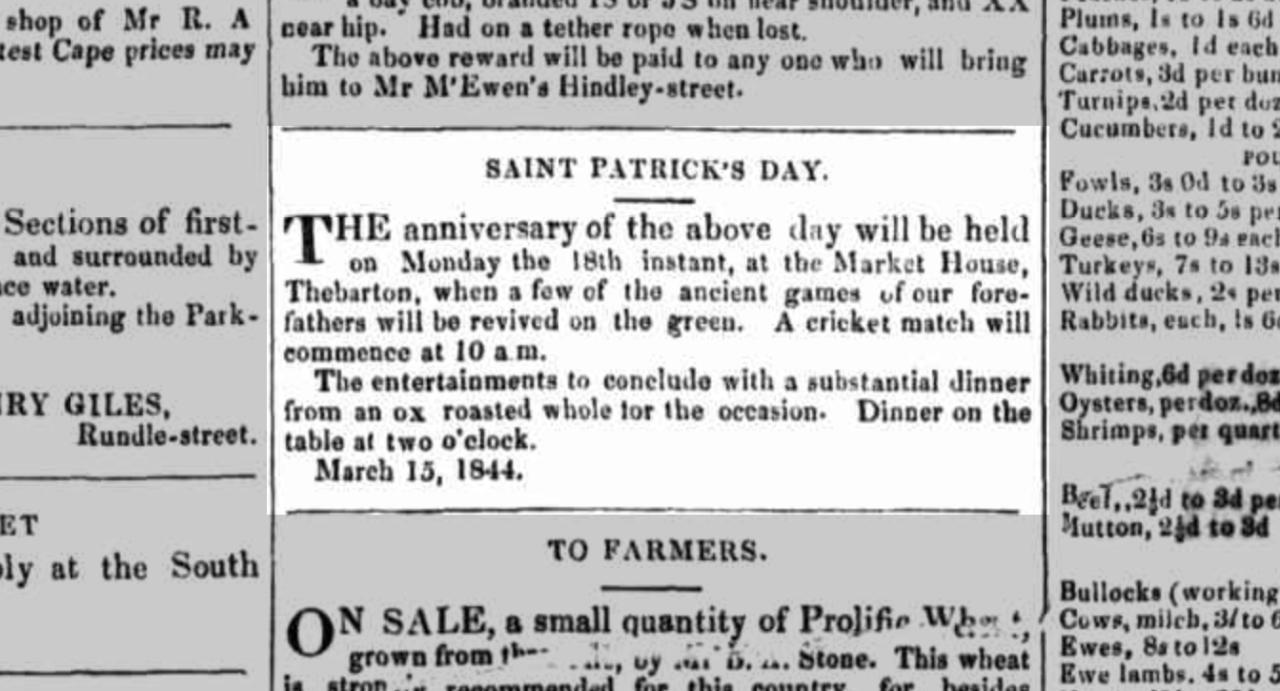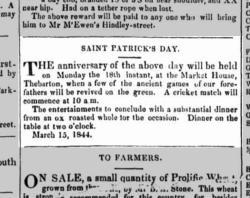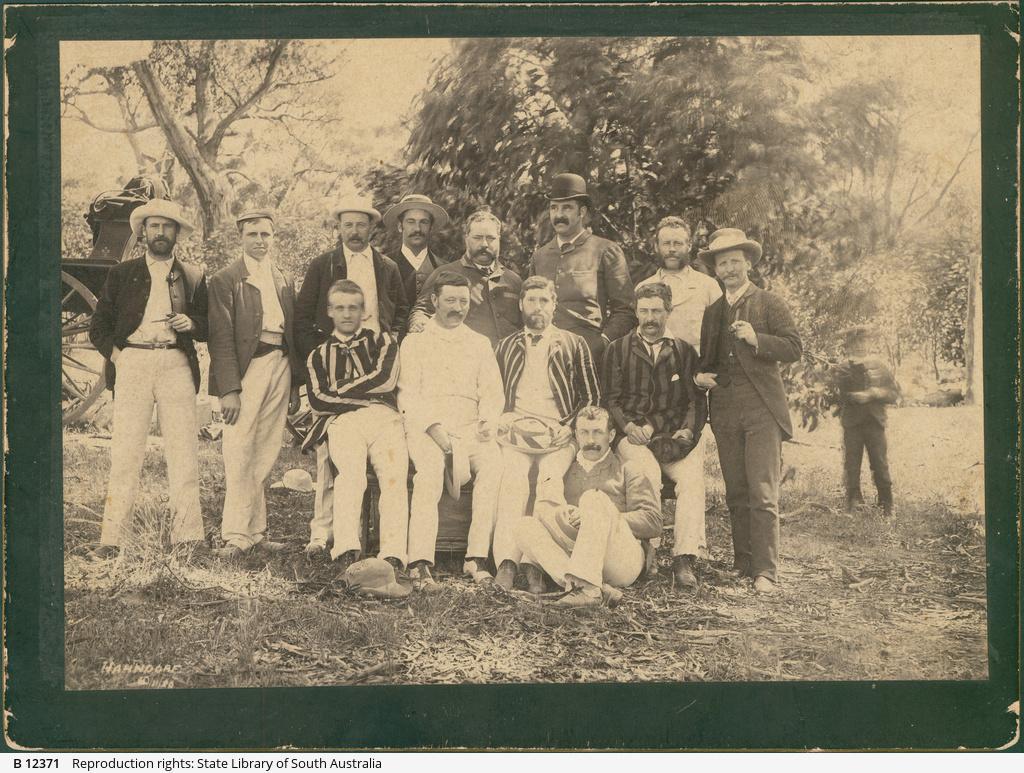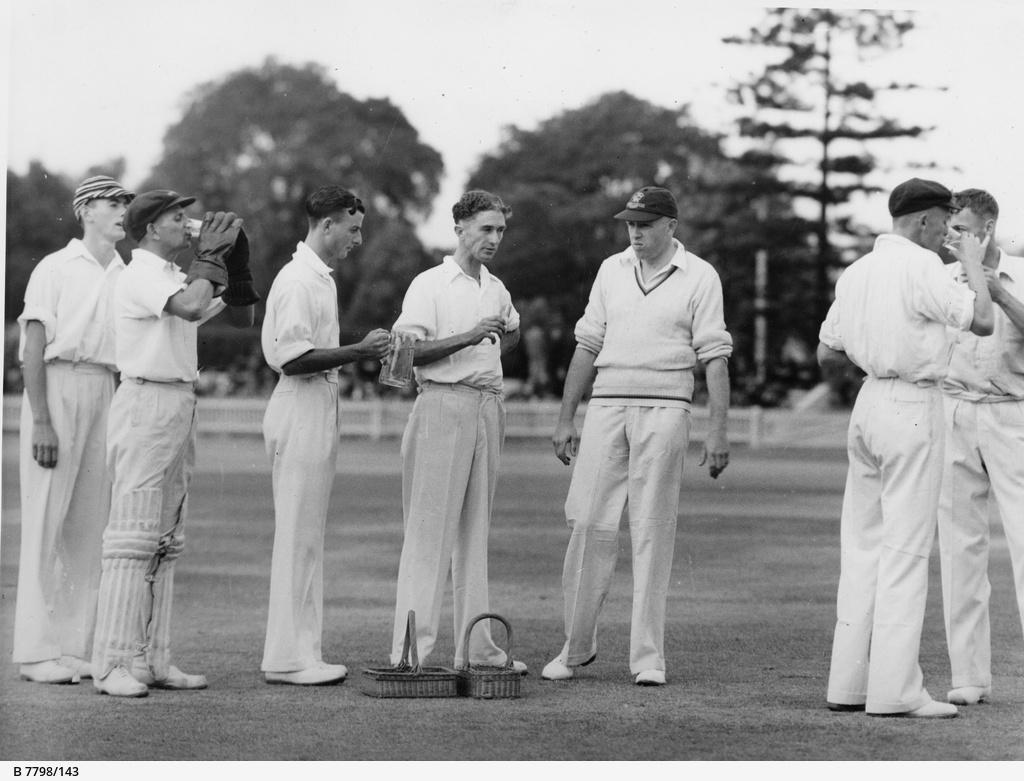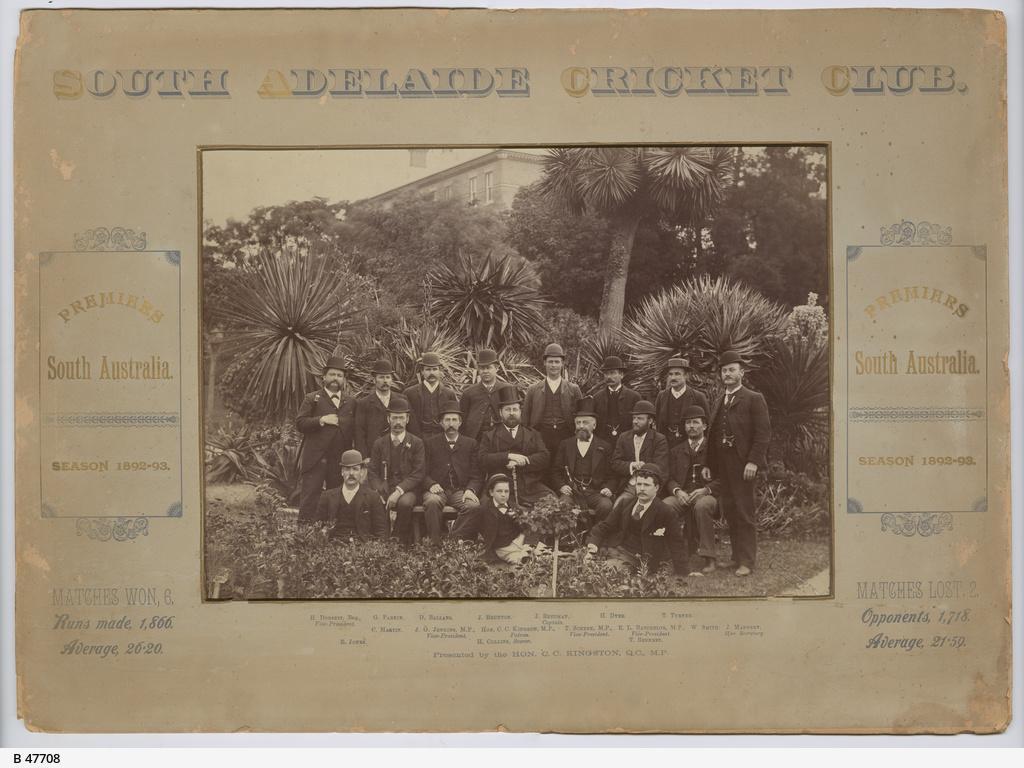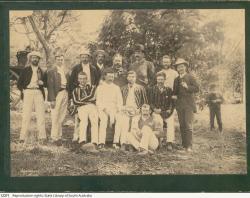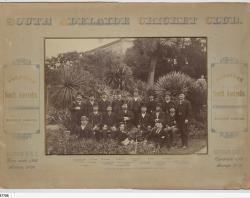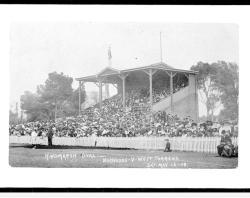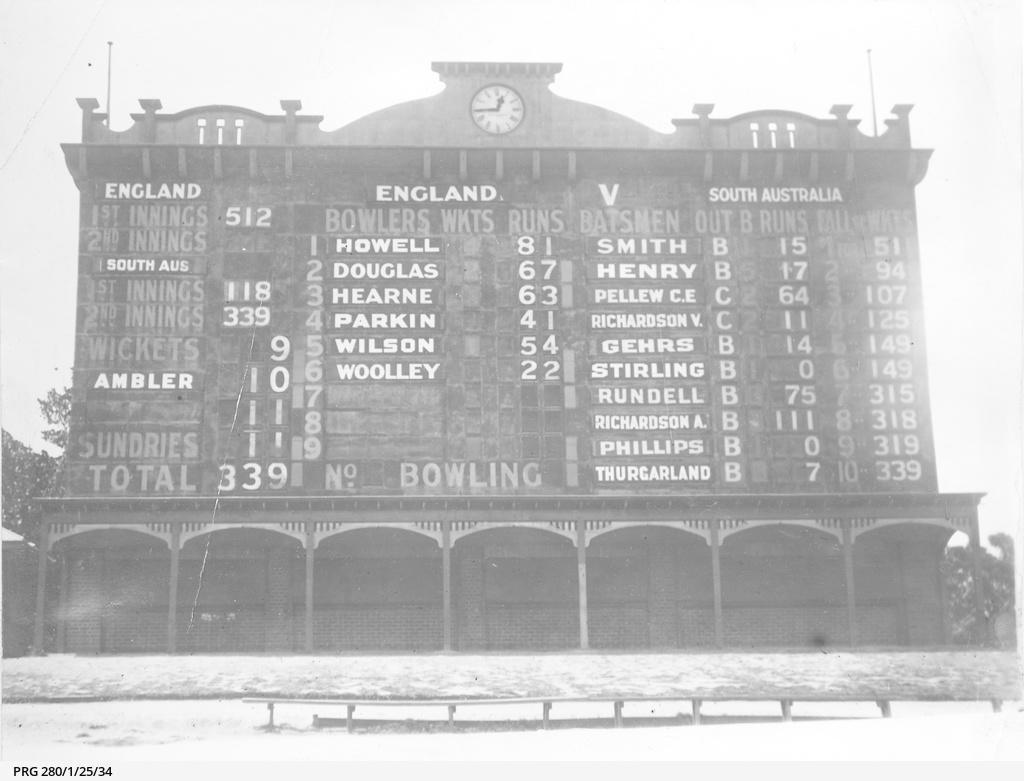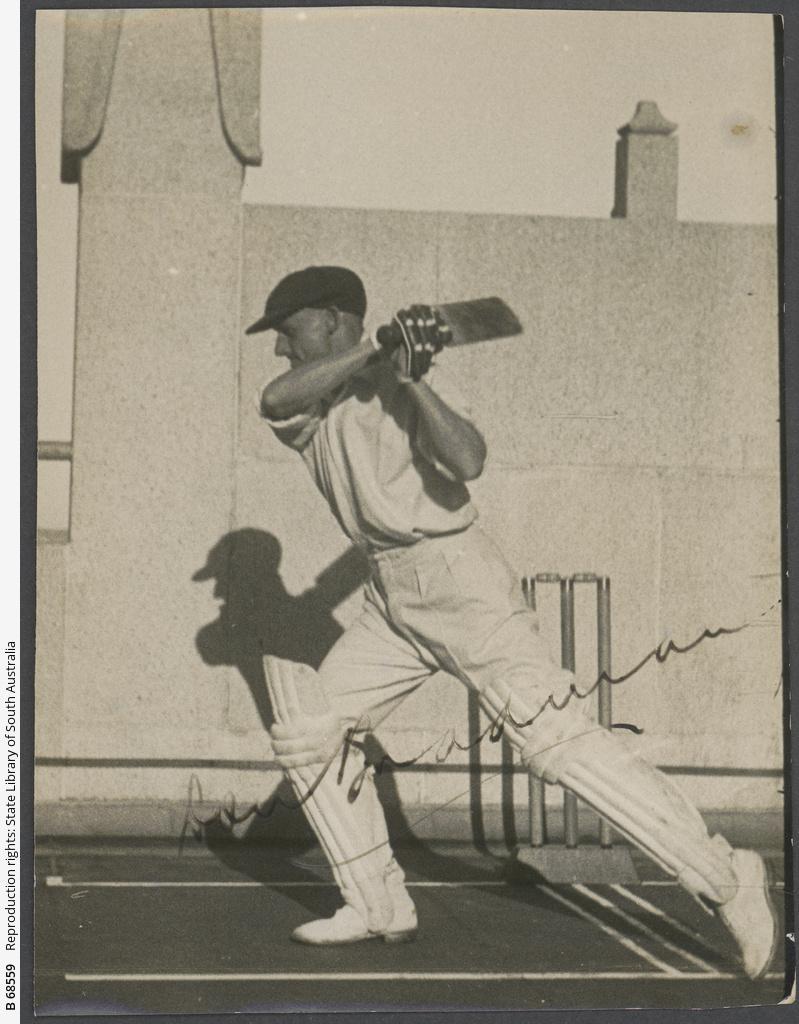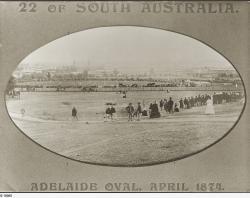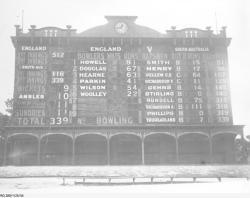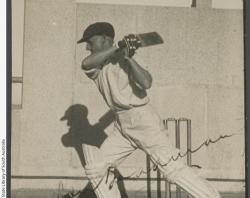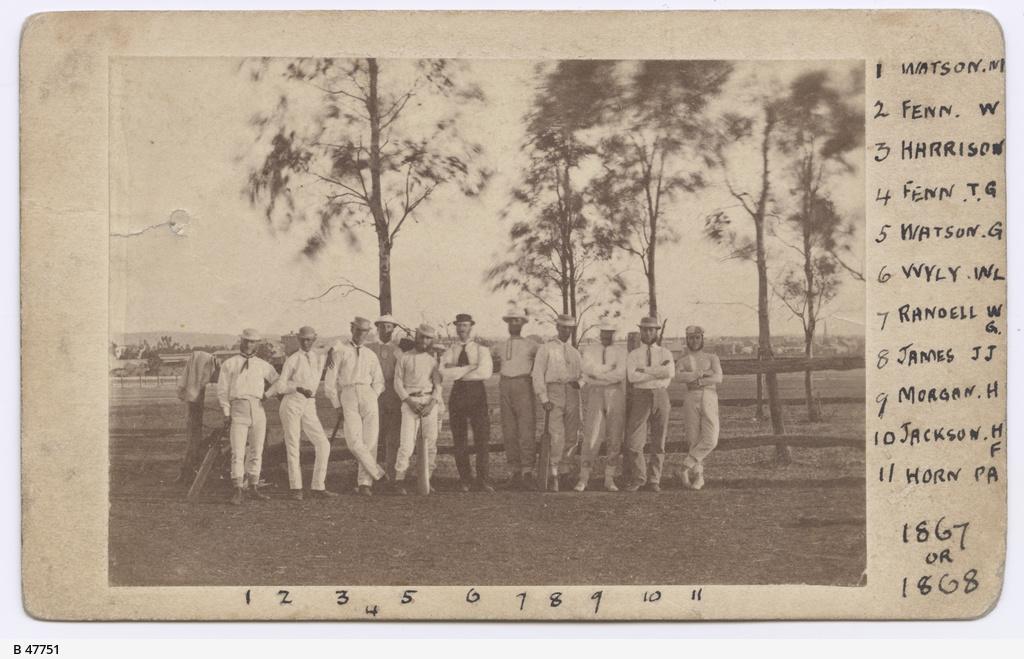
Anyone for cricket ?
South Australian’s have a long affinity with putting on their whites and playing the ‘Gentlemen's Game’
One of the early teams was the North Adelaide Young Men’s Society, formed in 1867 and known as the Holy Boys because they were associated with Brougham Place Congregational Church.
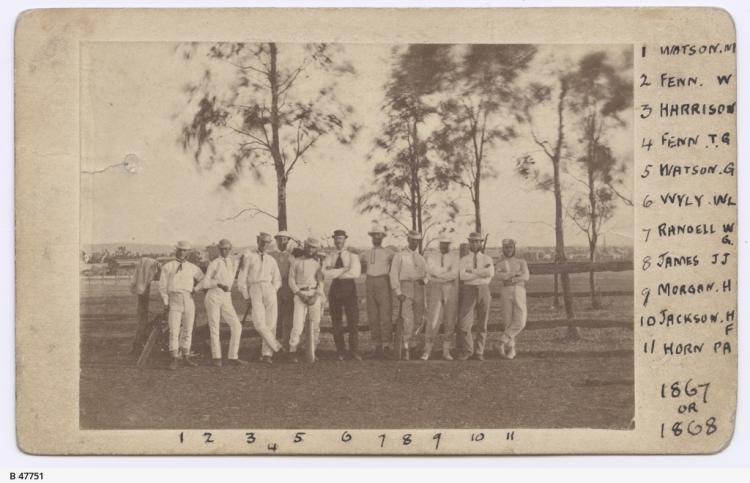
Another early club, formed in 1857, was the Hindmarsh Cricket Club commonly known as the 'Bricks'. In a letter from the town clerk to the Club in September 1896, they had been “granted [permission] to play on the Lindsay Circus Ground on the condition that the trees are looked after.” This may sound odd but at the time a ‘circus ground’ just meant a circle, or oval. In 1897 they became the West Torrens Cricket Club, making them the oldest continuous cricket club in South Australia.
Back to 1864 and underarm bowling was legalised in this year. Interestingly, this came about as Christina Willes used to bowl overarm to her brother John, who played cricket for Kent and England, to avoid getting her arm tangled up in her skirts. John then tried out the method at Lord’s, and the rest, as they say, is history. If you would like to learn more about the history of women in cricket, check out our Breaking boundaries story.
By 1871 cricket was becoming more established in the South Australia and the South Australian Cricketing Association (SACA) was formed. Read a newspaper article from the day. To show how important it was, for its first 26 years the presiding South Australian Governor was the SACA President, James Fergusson. An official program of matches was arranged for the first time in the 1873 –74 season with North Adelaide Young Men, Kensington, Kent, Norwood, South Adelaide and Quidnuncs taking part. Quidnuncs are people who’ve got a ‘cricket blue’ from Cambridge University which is the highest honour given to a Cambridge athlete.
Also in 1874, the city council allocated the land where the Adelaide Oval had been built to SACA, and that same year Dr WG Grace's team played there - the first English Eleven to come to South Australia. The iconic scoreboard at Adelaide Oval (designed by Kenneth Milne) was first used in November 1911, for a Sheffield Shield match against Victoria.
If you would like to learn more about the history of cricket in our state, the State Library of South Australia is lucky enough to have a wide variety of cricket memorabilia including Sir Donald Bradman’s scrapbooks containing press clippings, letters and photos. Read the story about Don Bradman and his career.
We do also have items of Sir Donald Bradman’s clothing, bats and balls and artworks, donated by Sir Donald himself, which are on loan to Adelaide Oval for their world-class Bradman Collection exhibition.
With such a long history there’s only one question we can ask this summer – anyone for cricket?
Explore more
Cricket club photographs in the collection

